Student Engineers Assist Local Historical Society with Restoration
By Stephen Wilson
In 1700s America, making soap and candles was a routine part of life. Rendering animal fat down to tallow was a dangerous and stinky endeavor. Rather than use the daily kitchen, an outdoor fire pit was used for the task.
That fire pit also came in handy during summer months to avoid indoor cooking during high heat or during festivities when roasting a whole animal.
To no surprise, such a fire pit had to be large: 9 feet across, 4 feet deep, and 4 feet high to be exact.
Lafayette students know this because they just restored one at Roseberry House in Phillipsburg, N.J.
One of the oldest homes in the region, the house predates the Revolutionary War when Lt. Peter Kinney owned and, ultimately, lost it. He had sold grain and horses to the cause but never received payment for the items. John Roseberry bought the home and property encompassing 152 acres at sheriff sale in 1787. The Roseberry family occupied the home until 1887, when Elizabeth Roseberry Anderson died. John Ingham bought the house and property that included 75.5 acres.
Slowly, though, the house deteriorated, was saved from demolition, and eventually fell into the hands of the Phillipsburg Area Historical Society (PAHS).
PAHS has worked for over a decade to renovate and rehab the home, restoring the kitchen, repointing the exterior brickwork, and weatherproofing the outside.
But much remains to be done and few hands to do it.
One hand is Edwin Landis ’56, an active member of PAHS, who has memories of visiting the house as a child; the owner back then delivered coal to the Landis household. Landis, seeing the need to repair the fire pit, reached out to Art Kney, professor of civil engineering and director of Landis Center for Community Engagement.
Kney thought it could be the perfect project for the Society of Environmental Engineers and Scientists (SEES).
“SEES had a new student president who wanted to take the club in a new direction that combined engineering, sustainability, and community connections,” says Kney.
Meet Zach Fiske ’23, fire pit restorer extraordinaire.
Seems superfluous? Hardly.
Richard and Pamela Backes, who sit on the executive committee and are two of the many members who oversee matters at Roseberry House, know what restoration involves: historical knowledge, research, material planning, fundraising, and expensive/meticulous contractors.
“There were a lot of technical details for something that seems so simple,” says Fiske.
Fiske began planning in 2020, visiting the house, talking with people, researching materials, drafting designs, and documenting everything.
“There was a real systems approach to the process that appealed to me and members of the SEES team,” he says. “In class you might be asked to design a fire pit on CAD, but what actually happens once the drawing leaves the printer? That’s not really something you can learn at a desk, so I think opportunities like these offer really valuable insight into the other half of the process.”
The Backeses are quick to point out that people like the Roseberry family were not just a bunch of dumb farmers. “They had to be skilled to survive and pass on all of their knowledge to ensure survival of future generations,” says Pam Backes.
That is the work at Roseberry: Educating guests to a way of life and keeping history intact for years to come.
“This house will be here long after us,” says Rich Backes.
Fiske, several SEES members, and other student volunteers spent two weekends restoring the fire pit: removing weeds, rebuilding side walls, packing mortar, digging a base, pouring base layers, leveling and screening materials, tamping down, puzzling fieldstones into a pattern, filling gaps, and adding finishing touches.
The crews worked through a hot patch and rain.
The finished product is something that should stand the test of time and help the house attract schools, community members, and donors who care about preservation of culture, restoration of historic properties, and education of old ways.
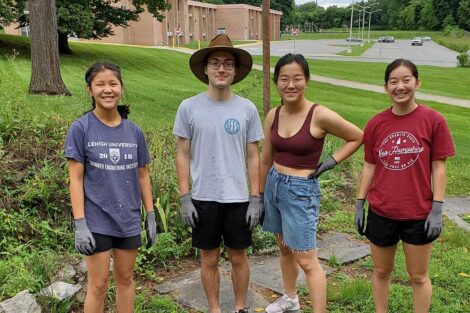

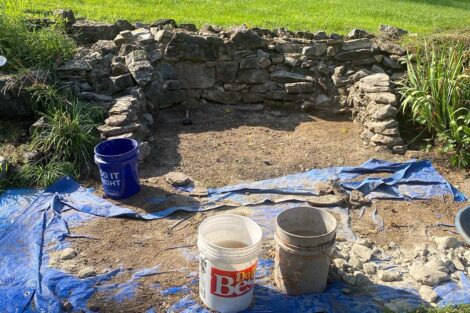
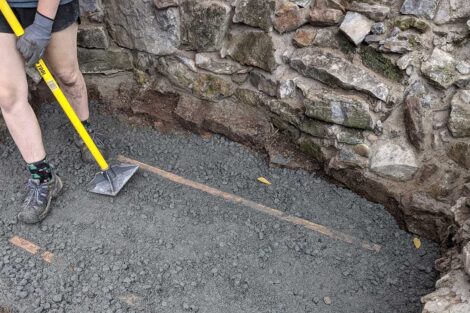
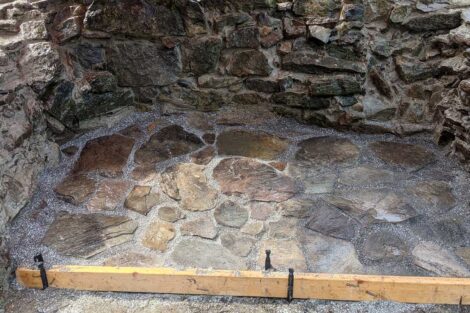
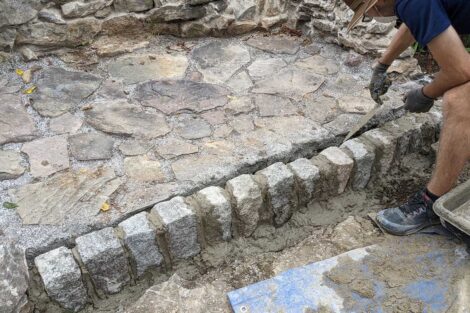
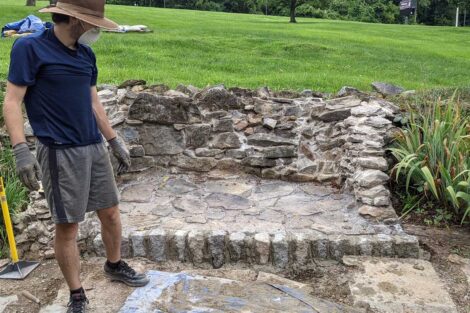
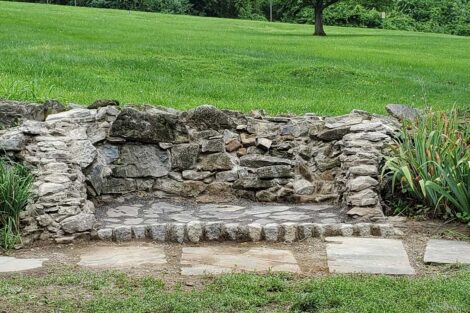
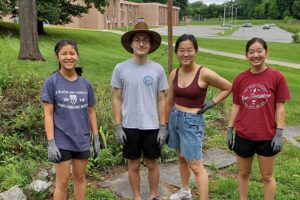
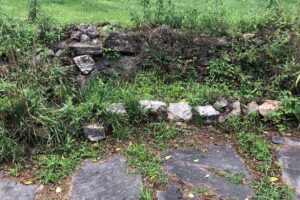
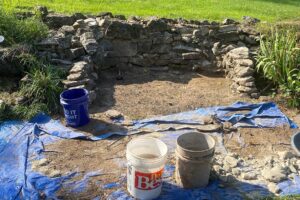
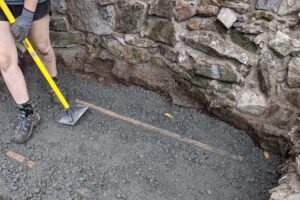
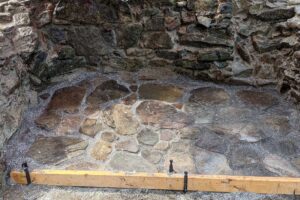
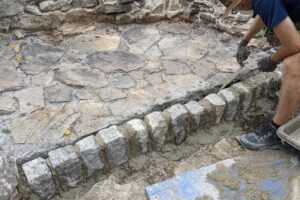
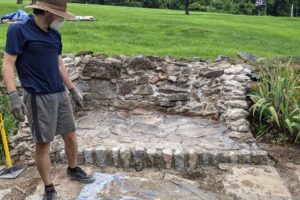
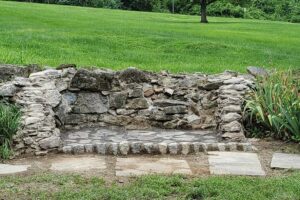
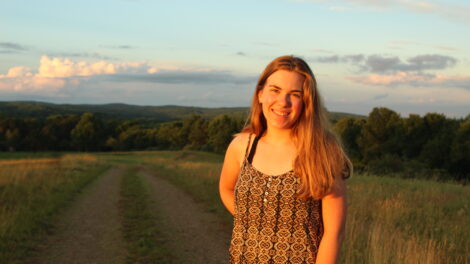
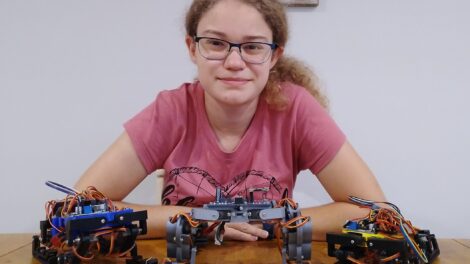
2 Comments
We are so grateful to have you guys help us out with the fire pit at Roseberry House. You all did a wonderful job! We wish nothing but the best for all of you in your future endeavors and appreciate the time you took to help us out with our preservation of history for our town.
Sincerely,
Melissa Lupi
President
Phillipsburg Historical Society
Student Engineering Team and Professor Kney,
The Phillipsburg Historical Society
is very grateful for your talents and unselfish commitments of time and energy to help us preserve a valuable piece of New Jersey History. Every step of the way in restoration is painstaking and costly. Your volunteerism was not only commendable but valuable to us.
This unselfish spirit of community cooperation will be documented
in the ongoing historical data of the life of The Roseberry House .
May your futures bring you back to see our progress and enjoy, at some point , a reenactment of the use of your fire pit .
In appreciation,
Donna Fulton
Chairman of the Board
Phillipsburg Historical Society
Comments are closed.